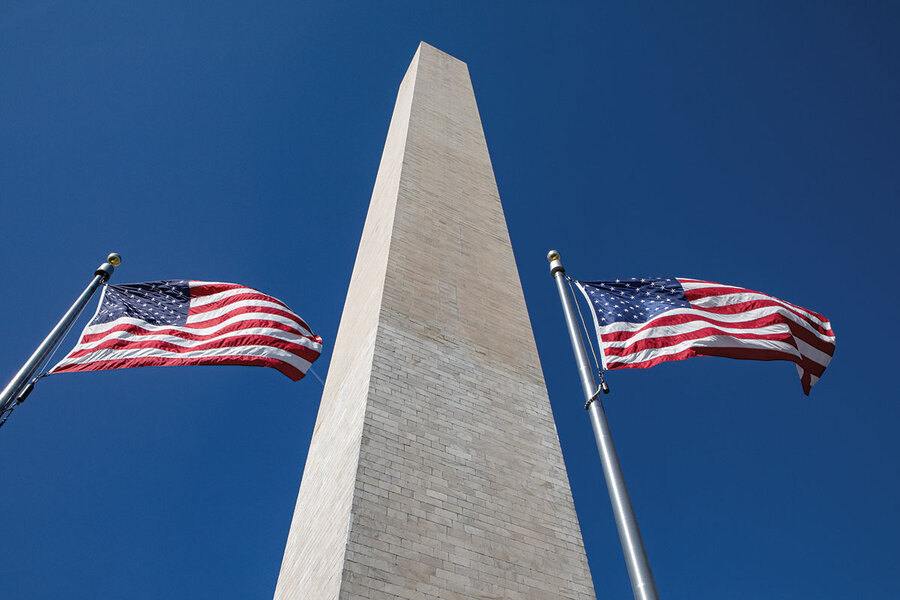Washington as a microcosm for America
Loading...
If you were to ask a thousand Americans to offer several adjectives to describe Washington, D.C., the list would surely be fascinating and perhaps a little bit instructive. “Patriotism” and “pride” would likely be on the list. But so, too, might “corrupt” or “disconnected.” As the United States capital, Washington has always been a microcosm of the country itself – a symbol of all its glories and contradictions.
But this week’s cover story, written by Michael S. Hopkins and photographed by Melanie Stetson Freeman, evokes an adjective that has always been true, but perhaps never more relevant than now: complex.
Ahead of the summer holidays, Michael and Melanie explore Washington as a microcosm for America as it emerges from the pandemic: Will tourists return to one of the country’s most-visited cities? But they also explore what it means to visit Washington in 2021 – after a failed insurrection encased the Capitol and White House in security fences and after a year of racial unrest prodded many Americans to look at their history differently.
The San Francisco school board recently offered one example of how this different view of history could play out. Earlier this year, it voted to change the names of about one-third of its public schools, including those named after Presidents Lincoln, Washington, and Jefferson. These names, among many others, honored people who subjugated women, Black Americans, Native Americans, or other marginalized groups, the school board said. Though the plan has been shelved, it spoke to an issue playing out nationwide: How does America account for past injustices?
It’s not too much of an overstatement to say that, historically, many of these aspects of American history have been swept under the rug. We’ve celebrated the good these men did and ignored the harm they did to certain communities or accepted it as part of a different era. But increasingly, for many Americans, that no longer seems sufficient.
So what does that mean for the monuments of Washington?
Interestingly, the change is already being etched into the stones themselves. Most obviously, Martin Luther King Jr. received his own monument in 2011. But even memorials before that – for the Vietnam and Korean wars – bespeak nuance and reflection more than triumphalism. The question Michael asks is whether we can see the whole of the nation’s history – and Washington’s monuments – with that same complexity.
It is an urgent question for the country. At a time when the U.S. is wrestling with how the ugliness of its past persists today, what is the space between ignorance and rejection? The visitors Michael interviews – of all backgrounds – offer one answer. The monuments remind us of what matters, they told him.
There has been good and there has been bad. Yet amid that complexity something greater endures, be it the hope of freedom or equality or peace. In their highest sense, Washington’s monuments are a testament to those hopes. And the ability to wring them from a complicated past is very much what it means to visit Washington in 2021.








